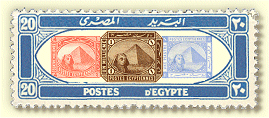
Fourth Issue April 1, 1879 - De La Rue
In 1876 Alfred. Caillard Pasha succeeded Giacomo Muzzi as Director General of Posts, changing the Post Office's secondary language from Italian to French.
Caillard awarded the contract for a new set of stamps to De La Rue of London, with notable changes in the quality of the design, paper, printing and perforation.
The designs had different frames in order to distinguish the various values, the sheets were of 240 stamps instead of the previous 200-stamp sheets, because the sheet size was in accord with the
British monetary system to which of De La Rue's machinery was adapted. This fourth issue was to have a run of 34 years with changes in denominations, colours and currency type.

First Period, 1879-1883, characterised by the initial colours and currency. April 1, 1879
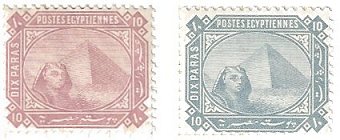
Colour changes of 10 para issue during the first period
Lilac-Rose January 1881, Pale Grey January 25, 1882
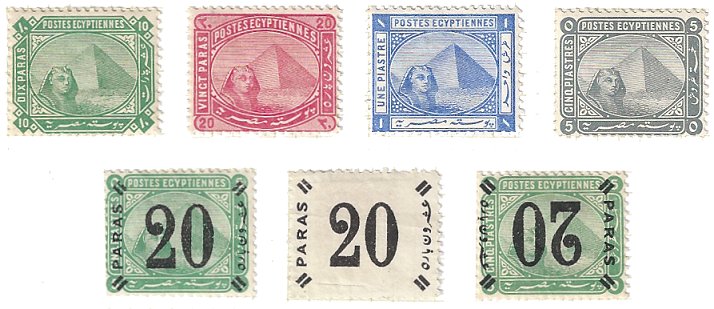
Second Period, 15 December 1884-1888.
Characterised by a change in the colour scheme recommended by the UPU.
Febuary 1, 1884 surcharge 20 paras on five piastres.
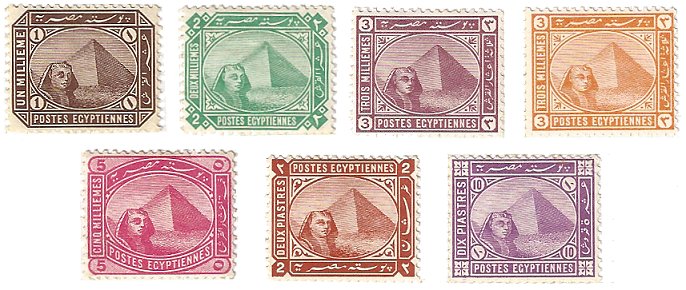
Third Period, 1888-1902.
Currency Reform - Replacement of paras by millièmes
The Introduction of a new style of printing plate.
August 1, 1893 - 3 millièmes yellow
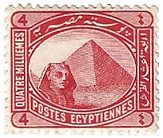
Fourth Period, 1902-1915, marked by conversion to chalk-surfaced paper and introduction of a third style of printing plate, 1902.
The 4 millièmes,1906, is the only Fourth issue stamp found only on chalky paper.
Others reprinted are 1, 2, 3 (not the maroon), 5 millièmes, 1, 2, 5 and 10 piastres.
Articles:
The London Philatelist & L'OP No. 89 reprinted in L'OP No.122 May 1970
LOP 128 October 1974
QC 105 March 1976
QC 158 June 1991
QC 169 June 1994
Collections:
The Ibrahim Shoukry Collection
Peter Smith: Egypt: Stamps & Postal History:
XV-The Fourth Issue p221/245
|
|